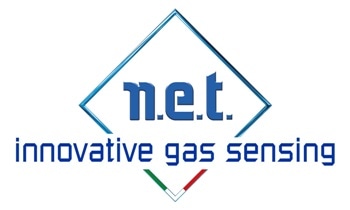The performance requirements for electrical apparatus employed in the direct detection and direct concentration measurement of toxic gases and vapors in workplace atmospheres, including sensors, are stipulated in the European Standard EN 45544-2 (Workplace atmospheres. Electrical apparatus used for the direct detection and direct concentration measurement of toxic gases and vapors. Performance requirements for apparatus used for exposure measurement)
.jpg)
This standard delivers a consistent method and structure for the testing of performance criteria to manufacturers, test laboratories and apparatus users.
However, the standard notes, “It is the manufacturer’s primary responsibility to ensure that the apparatus meets the requirements laid down, including environmental influences which can be expected to affect performance.”
EN45544-2-Compliant Electrochemical Cells
Taking this into account, N.E.T. has developed its Premium Line. This is a range of electrochemical cells designed to surpass the performance requirements of EN 45544-2 – including upper and lower limit of measurement, deviation of the measured values in both clean air and in standard test gas, deviation of the measured values at any temperature, pressure or humidity level, time of response (t90, t50), time of recovery (t10, t50), over-range and stability.
The Premium Line is produced only for N.E.T. in Japan and includes sensors for CO, NO, NO2, H2S, SO2, HCl, Cl2, Ethylene, Formaldehyde, Hydrogen Peroxide, NH3 (available in 4 different ranges) and the new H2S-HT cell for high temperatures.
In developing the Premium Line, N.E.T. has attempted to address some of the frequently experienced issues in electrochemical technology.
Electrochemical sensors can suffer a loss of sensitivity where affected by other gases. A characteristic instance of this is how the presence of hydrogen sulfide (H2S) can have a significant impact on the reading of ammonia (NH3) sensors.
Where H2S is present, the standard electrochemical sensors currently available show an increase in signal and follow the concentration of H2S. Conversely, an N.E.T. sensor in this situation demonstrates a smooth, negative response within an unsurpassed actual H2S concentration of under 10%.
A further frequently experienced issue is that manner in which, depending on the variety of sensor and the target gas, over time, the sensor is consumed by the gas it is supposed to measure. This results not only in the need for frequent calibration and bump-tests, but a baseline presence of gas in the environment can lead to the rapid depletion of the sensor itself.
Premium Line Sensors from N.E.T.
N.E.T.’s Premium Line sensors are expected to enjoy a life span of 2 years, or in the cases of CO and NO2, 3 years. The company’s NH3 sensor is again significant for its resistance to a light presence of ammonia in the environment and its ability to recover sensitivity after high exposures, seriously lessening the frequency of calibration and substitution.
Lastly, sensitivity and baseline are both affected by environmental factors, and particularly temperature. The Premium Line sensors are able to uphold high-quality performance across an extensive range of temperature. The H2S-HT cell is matchless on the market, with an incredible -40 °C +65 °C.

This information has been sourced, reviewed and adapted from materials provided by Nano Environment Technology (N.E.T).
For more information on this source, please visit Nano Environment Technology (N.E.T).